Themed collection Thermoelectrics

Prospects for polymer -based thermoelectrics: state of the art and theoretical analysis
Two monomers featured in high-power-factor polymers and occupancy probability (Fermi function) superimposed over a DOS distribution preferred for high Seebeck coefficient.

Energy Environ. Sci., 2012,5, 8110-8115
https://doi.org/10.1039/C2EE22124A
Resonant levels in bulk thermoelectric semiconductors
A comprehensive review is presented of the physics of resonant dopant impurities in semiconductors, emphasizing those that enhance the thermoelectric power and efficiency. The theory of the enhancement mechanisms is explained, and an extensive review of the experimental literature is given covering III–VI, II–V, IV–VI and V2-VI3 compound semiconductors.
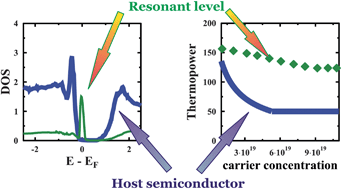
Energy Environ. Sci., 2012,5, 5510-5530
https://doi.org/10.1039/C1EE02612G
Perspectives on thermoelectrics: from fundamentals to device applications
This paper discusses recent advances in the thermoelectric field from fundamentals of carrier transport to materials and device design and applications.
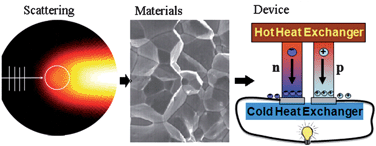
Energy Environ. Sci., 2012,5, 5147-5162
https://doi.org/10.1039/C1EE02497C
A high thermoelectric figure of merit ZT > 1 in Ba heavily doped BiCuSeO oxyselenides
A high ZT value of ∼1.1 at 923 K in BiCuSeO oxyselenides has been achieved by the combination of optimizing electrical transport properties through Ba heavily doping and reducing thermal conductivity through refining grain sizes. High performance along with excellent thermal and chemical stabilities makes BiCuSeO very promising for thermoelectric applications.
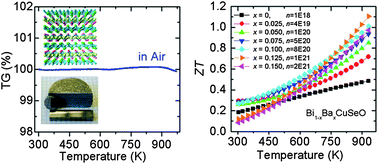
Energy Environ. Sci., 2012,5, 8543-8547
https://doi.org/10.1039/C2EE22622G
Stronger phonon scattering by larger differences in atomic mass and size in p-type half-Heuslers Hf1−xTixCoSb0.8Sn0.2
Stronger phonon scattering by larger differences in atomic mass and size in p-type half-Heuslers HfTiCoSbSn
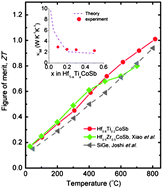
Energy Environ. Sci., 2012,5, 7543-7548
https://doi.org/10.1039/C2EE21554C
Thermoelectric Bi2Te3-improved charge collection for high-performance dye -sensitized solar cells
A new type of dye-sensitized solar cell based on Bi2Te3/TiO2 anode to simultaneously harvest thermal and photo energies is reported.

Energy Environ. Sci., 2012,5, 6294-6298
https://doi.org/10.1039/C1EE02385C
Enhancement of thermoelectric figure-of-merit by resonant states of aluminium doping in lead selenide
By adding Al in PbSe, we prepared n-type PbSe thermoelectric materials with a figure-of-merit (ZT) of 1.3 due to a combination of high Seebeck because of resonant states by Al doping and low thermal conductivity.
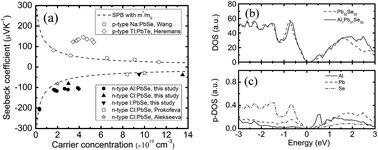
Energy Environ. Sci., 2012,5, 5246-5251
https://doi.org/10.1039/C1EE02465E
PbTe–PbSnS2 thermoelectric composites: low lattice thermal conductivity from large microstructures
Large PbSnS2 (>100 nm) microstructures in PbTe effectively reduce lattice thermal conductivity, rivaling state of the art nanostructured thermoelectric materials.
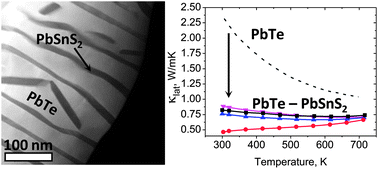
Energy Environ. Sci., 2012,5, 8716-8725
https://doi.org/10.1039/C2EE22495J
Thermopower enhancement in conducting polymer nanocomposites via carrier energy scattering at the organic–inorganic semiconductor interface
A remarkably increased Seebeck coefficient and power factor of FeCl3-doped poly(3-hexylthiophene) (P3HT) by rationally mixing with Bi2Te3 nanowires was reported.
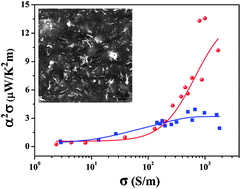
Energy Environ. Sci., 2012,5, 8351-8358
https://doi.org/10.1039/C2EE21803H
Low effective mass leading to high thermoelectric performance
Contrary to what is generally believed, low effective mass is demonstrated to be beneficial for thermoelectrics.
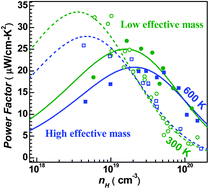
Energy Environ. Sci., 2012,5, 7963-7969
https://doi.org/10.1039/C2EE21536E
Polycrystalline BiCuSeO oxide as a potential thermoelectric material
Good electrical conductivity, large Seebeck coefficients and low thermal conductivity were obtained for pristine BiCuSeO oxides with a layered structure of alternately stacked conductive (Cu2Se2)2− and insulating (Bi2O2)2+ layers, resulting in a high ZT value of 0.70 at 773 K.
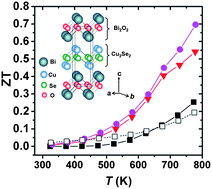
Energy Environ. Sci., 2012,5, 7188-7195
https://doi.org/10.1039/C2EE21274A
Flexible carbon nanotube papers with improved thermoelectric properties
Ar plasma treatment is an effective method to enhance thermoelectric properties of flexible CNT papers with greatly increased Seebeck coefficients and largely decreased thermal conductivities.

Energy Environ. Sci., 2012,5, 5364-5369
https://doi.org/10.1039/C1EE01931G
High thermoelectric figure of merit in nanostructured p-type PbTe–MTe (M = Ca, Ba)
Endotaxially embedding nanocrystals of the alkaline earth tellurides CaTe or BaTe in PbTe doped with Na2Te heat carrying phonons can be strongly scattered with little effect on the power factor. The highest thermoelectric figure of merit, ZT, value achieved is ∼1.5 at 765 K for 6% CaTe containing sample, while 3% BaTe containing sample shows the ZT of ∼1.3 at 760 K.
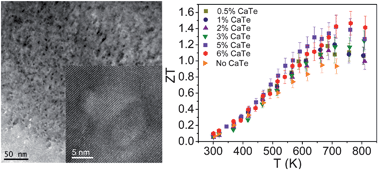
Energy Environ. Sci., 2011,4, 4675-4684
https://doi.org/10.1039/C1EE02297K
Optimized thermoelectric properties of Mo3Sb7−xTex with significant phonon scattering by electrons
Phonon scattering by electrons is effective for increasing lattice thermal resistivity in Mo3Sb7−xTex, especially in high carrier concentration samples.
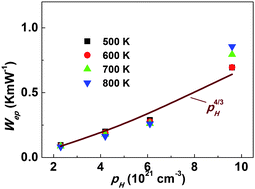
Energy Environ. Sci., 2011,4, 4086-4095
https://doi.org/10.1039/C1EE01406D
Combining alloy scattering of phonons and resonant electronic levels to reach a high thermoelectric figure of merit in PbTeSe and PbTeS alloys
Thallium triggers formation of resonant electronic states in PbTe alloys' valence bands that enhance the thermoelectric figure of merit.
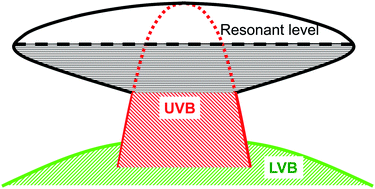
Energy Environ. Sci., 2011,4, 4155-4162
https://doi.org/10.1039/C1EE01895G
A novel high-performance photovoltaic–thermoelectric hybrid device
A novel photovoltaic–thermoelectric hybrid device based on a dye-sensitized solar cell is presented with an overall efficiency of 13.8%.
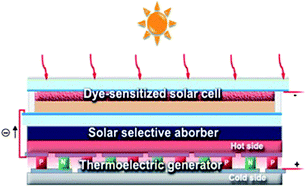
Energy Environ. Sci., 2011,4, 3676-3679
https://doi.org/10.1039/C1EE01646F
Combination of large nanostructures and complex band structure for high performance thermoelectric lead telluride
Independent effects of band structure complexity and large nanostructures combine to improve the thermoelectric performance.
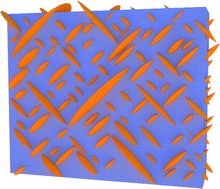
Energy Environ. Sci., 2011,4, 3640-3645
https://doi.org/10.1039/C1EE01928G
Sb2Te3 and Bi2Te3 based thermopower wave sources
Self-propagating thermopower waves on P- type Sb2Te3 and N-type Bi2Te3 layers result in a high specific power output.
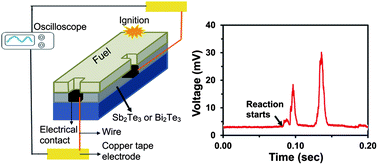
Energy Environ. Sci., 2011,4, 3558-3564
https://doi.org/10.1039/C1EE01370J
Reevaluation of PbTe1−xIx as high performance n-type thermoelectric material
The reevaluation of PbTe1−xIx reveals a significantly larger figure of merit, peak zT ∼ 1.4, than often previously reported for n-type PbTe.
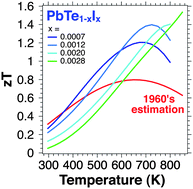
Energy Environ. Sci., 2011,4, 2090-2096
https://doi.org/10.1039/C1EE01314A
High thermoelectric figure of merit in heavy hole dominated PbTe
Thermoelectric Na-doped PbTe is much better than previously believed and comparable with the recently discovered PbTe:Tl but less toxic.
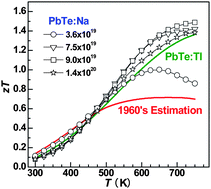
Energy Environ. Sci., 2011,4, 2085-2089
https://doi.org/10.1039/C0EE00456A
Ca3AlSb3: an inexpensive, non-toxic thermoelectric material for waste heat recovery
The inexpensive, nontoxic material, Ca3AlSb3, exhibits a promising thermoelectric figure of merit arising from an extremely low lattice thermal conductivity.
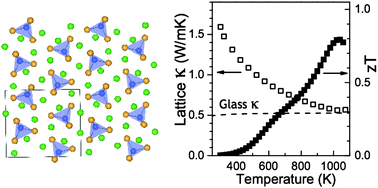
Energy Environ. Sci., 2011,4, 510-518
https://doi.org/10.1039/C0EE00517G
Recrystallization induced in situ nanostructures in bulk bismuth antimony tellurides: a simple top down route and improved thermoelectric properties
Recrystallization induced in situ nanostructures were used as a new means to obtain enhanced thermoelectric performance in polycrystalline Bi0.5Sb1.5Te3 alloys.
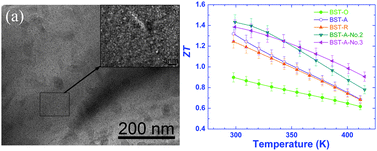
Energy Environ. Sci., 2010,3, 1519-1523
https://doi.org/10.1039/C0EE00012D
About this collection
We would like to share with you some great recent articles published on thermoelectrics in Energy & Environmental Science.
With an Impact Factor of 9.61 and ranked #1 in its field, Energy & Environmental Science is the ideal place to publish your thermoelectrics research.